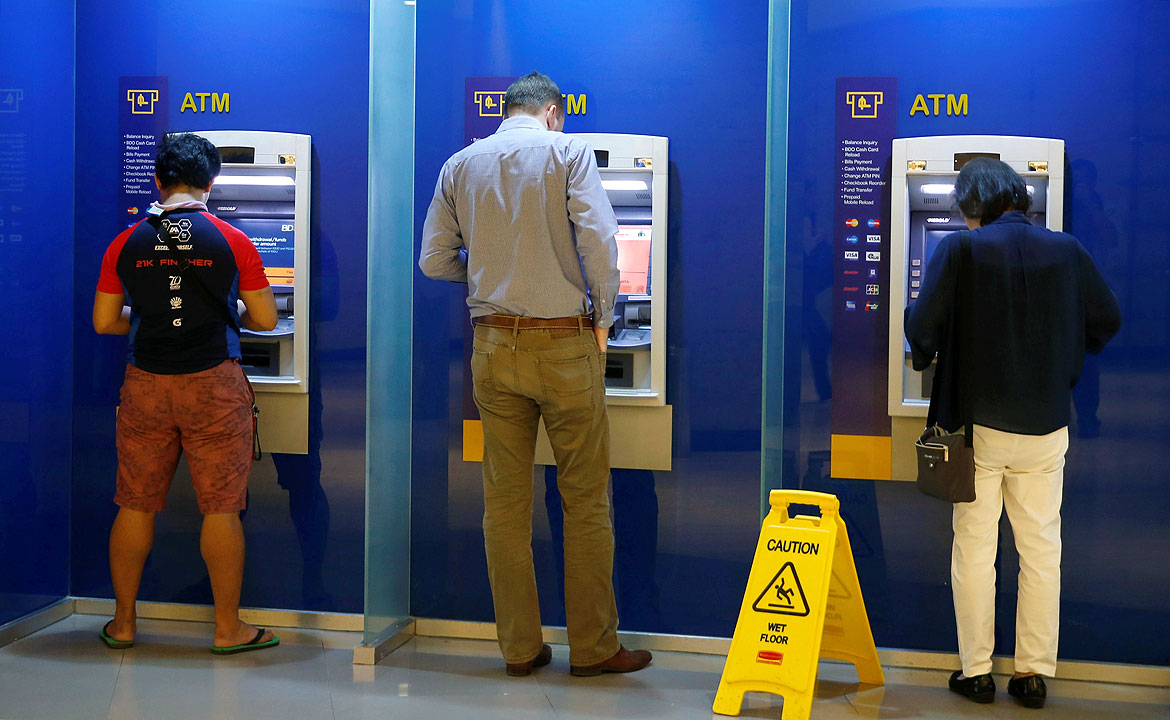
PHILIPPINE BANKS’ combined net income grew by 4.14% in the first half as both net interest and non-interest earnings increased year on year.
The banking industry’s net profit climbed to P198.14 billion in the six months through June from P190.26 billion a year ago, data from the Bangko Sentral ng Pilipinas (BSP) showed.
Universal and commercial banks’ combined net income was at P184.45 billion in the first semester, while the thrift bank group booked a P10.73-billion net profit and the rural and cooperative bank sector posted net earnings of P5.34 billion. Lastly, digital banks recorded a combined net loss of P2.38 billion.
Broken down, the banking industry’s net interest income climbed 11.7% year on year to P564.98 billion in the six-month period from P505.82 billion.
This came as interest income grew 9.84% to P800.86 billion from P729.14 billion, faster than the 5.37% increase in interest expense to P234.66 billion from P222.7 billion.
Meanwhile, non-interest income rose 14.59% to P119.74 billion from P104.49 billion the year prior.
This was mainly driven by the 236.16% surge in trading income to P46.86 billion from P13.94 billion a year ago. Fees and commissions income also increased 15.55% to P89.02 billion from P77.04 billion.
Higher net interest and non-interest earnings partly offset the increase in the sector’s expenses in the period. Banks’ non-interest expenses grew by 12.56% year on year to P384.03 billion in the first half from P341.19 billion.
This was due to increases in spending on compensation, taxes and licenses, fees and commissions, and other administrative expenses. Banks also recorded higher impairment losses and provisioning.
Analysts said lending growth continued to drive Philippine banks’ profitability in the first half.
“The continuous rate cutting, along with RRR (reserve requirement ratio) easing may have increased the volume of loans that banks can give out to borrowers. Instead of interest payments, the increased volume of loans may have contributed to the increased profitability of these banks,” said Reinielle Matt M. Erece, an economist at Oikonomia Advisory and Research, Inc.
“This is largely attributed to stronger loan growth of banks at more than 12% in recent months, easing NPL (nonperforming loan) ratio and some improvement in asset quality, some trading gains amid Federal Reserve and BSP rate cuts since the latter part of 2024 amid benign local inflation, some pickup in gross domestic growth… that fundamentally increased demand for banking products and services by businesses, industries, and other institutions that support some increase in banks’ net income,” Rizal Commercial Banking Corp. Chief Economist Michael L. Ricafort said.
Mr. Ricafort said RRR reductions since last year have infused more than P700 billion in liquidity into the financial system, which increased banks’ loanable and investible funds.
Jonathan L. Ravelas, senior adviser at Reyes Tacandong & Co., said banks’ shift towards consumer lending and better expense management also supported the industry’s income growth.
“Lower rates helped boost loan demand, while asset quality stayed stable,” he added.
The BSP has cut benchmark interest rates by a cumulative 125 basis points (bps) since it began its easing cycle in August 2024, with its latest move being a 25-bp reduction in June. It is widely expected to deliver another rate cut later this month.
Meanwhile, in March, the RRR of universal and commercial banks and nonbank financial institutions with quasi-banking functions was reduced by 200 bps to 5%. The ratio for digital banks was also lowered by 150 bps to 2.5%, while the RRR for thrift lenders was cut by 100 bps to 0%. Rural and cooperative banks’ RRR has been at zero since October.
Mr. Ravelas said Philippine banks are likely to remain profitable, although income growth may moderate.
“Rate cuts could squeeze margins, so volume-driven lending and efficiency will be key. Watch for how banks manage risk and scale consumer finance.”
ASSETS CONTINUE TO EXPANDSeparate BSP data showed that the Philippine banking industry’s assets expanded by 7.71% to P28.21 trillion as of June from P26.19 trillion in the comparable year-ago period.
This was also 3.48% higher than the P27.26 trillion logged as of May.
Banks’ assets are mainly supported by deposits, loans, and investments. These include cash and due from banks as well as interbank loans receivable (IBL) and reverse repurchase (RRP), net of allowances for credit losses.
According to central bank data, bulk of the Philippine banking system’s assets were held by universal and commercial banks at P26.4 trillion at end-June.
The banking sector’s combined net total loan portfolio inclusive of IBL and RRP grew 11.13% year on year to P15.38 trillion as of June from P13.84 trillion.
Net investments, or financial assets and equity investments in subsidiaries, stood at P8.38 trillion in the period, increasing 11.29% from P7.53 trillion a year prior.
Net real and other properties acquired went up 18.26% year on year to P129.38 billion from P109.4 billion.
Meanwhile, cash and due from banks dropped 19.63% to P2.21 trillion from P2.75 trillion.
On the other hand, the total liabilities of the banking system grew 7.29% to P24.71 trillion at end-June from P23.03 trillion a year ago.
The majority of banks’ liabilities were deposits, which increased 5.89% to P20.67 trillion in the period from P19.52 trillion a year prior.
Peso-denominated deposits stood at P17.15 trillion, while foreign currency deposits were at P3.52 trillion. — BVR with inputs from Katherine K. Chan